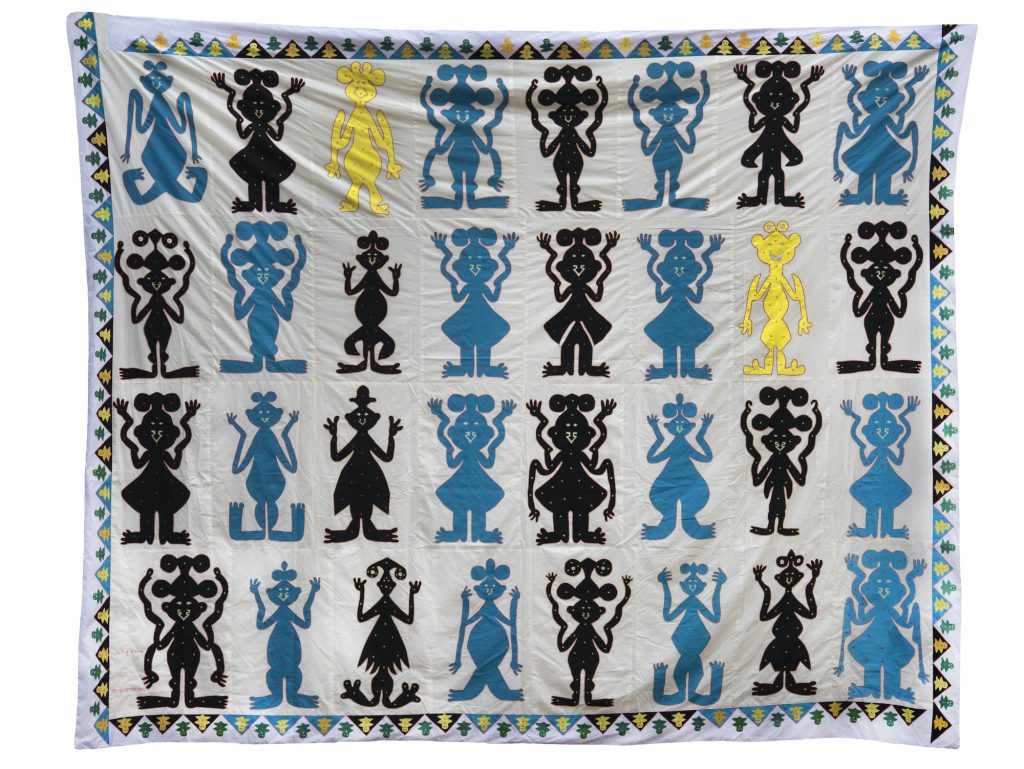
Tcheu Siong, Me nyuam dab nriag, 2018, embroidery and appliqué on cotton, 362 x 445 cm
Tcheu Siong, Me nyuam dab nriag, 2018, embroidery and appliqué on cotton, 362 x 445 cm

All is animate and relational in Tcheu Siong’s world, one in which the inhabitants of physical and spiritual realms coexist and interact, guiding all aspects of life and death. Accordingly, Siong upholds active mediation with the vast population of dab, or spirits, including the dab nyeg of the domestic realm and the dab qus of the natural realm, to maintain harmony and keep the body’s many souls in good health.
Central to Siong’s hand-cut and embroidered fabric appliqué works is the dreamworld from which figurative images are retained through a dawn drawing practice and later transformed in a communal process with her daughter—laborious cutting, collaging, and stitching shapes—and identification in partnership with her husband, the shaman of their village on the outskirts of Luang Prabang, Laos. These aspects of collectivity, time, labor, and innovation belong to the diverse techniques and designs of the paj ntaub hmoob tradition. Coded and recoded by women over time, these textiles signal simultaneous meanings from gender roles and festivity to ethnic and geographic belonging. Forced migration from sustenance highland farming in her Zomian homelands to capitalistic lowland urban settlement gave way to Siong’s experiments in appliqué and ultimately to her life as an artist. By giving presence to the unseen, the artist in turn grants agency to the active and complex role of spirits.
Siong departs from the all-over geometric abstraction of paj ntaub hmoob in her focus on moj zeej, the shadow-spirit motif. Many works narrate oral histories, like Yawm saub chao (2009), which refers to the god Saub who gave birth to the original twelve Hmong clans. Others make visible spirits that punish people who harm the land or elder spirits who train adolescents how to govern fairly. Her largest-ever work, Me nyuam dab nriag (2018), conjures connections to a ritual text, qhuab ke, which is chanted to guide a deceased human through their memories to their place of death and onward to their ancestors—the final reunion that provides the source of renewed life.
Tcheu Siong, Me nyuam dab nriag, 2018, embroidery and appliqué on cotton, 362 x 445 cm